July 27-August 2, 2025
A week of wild extremes
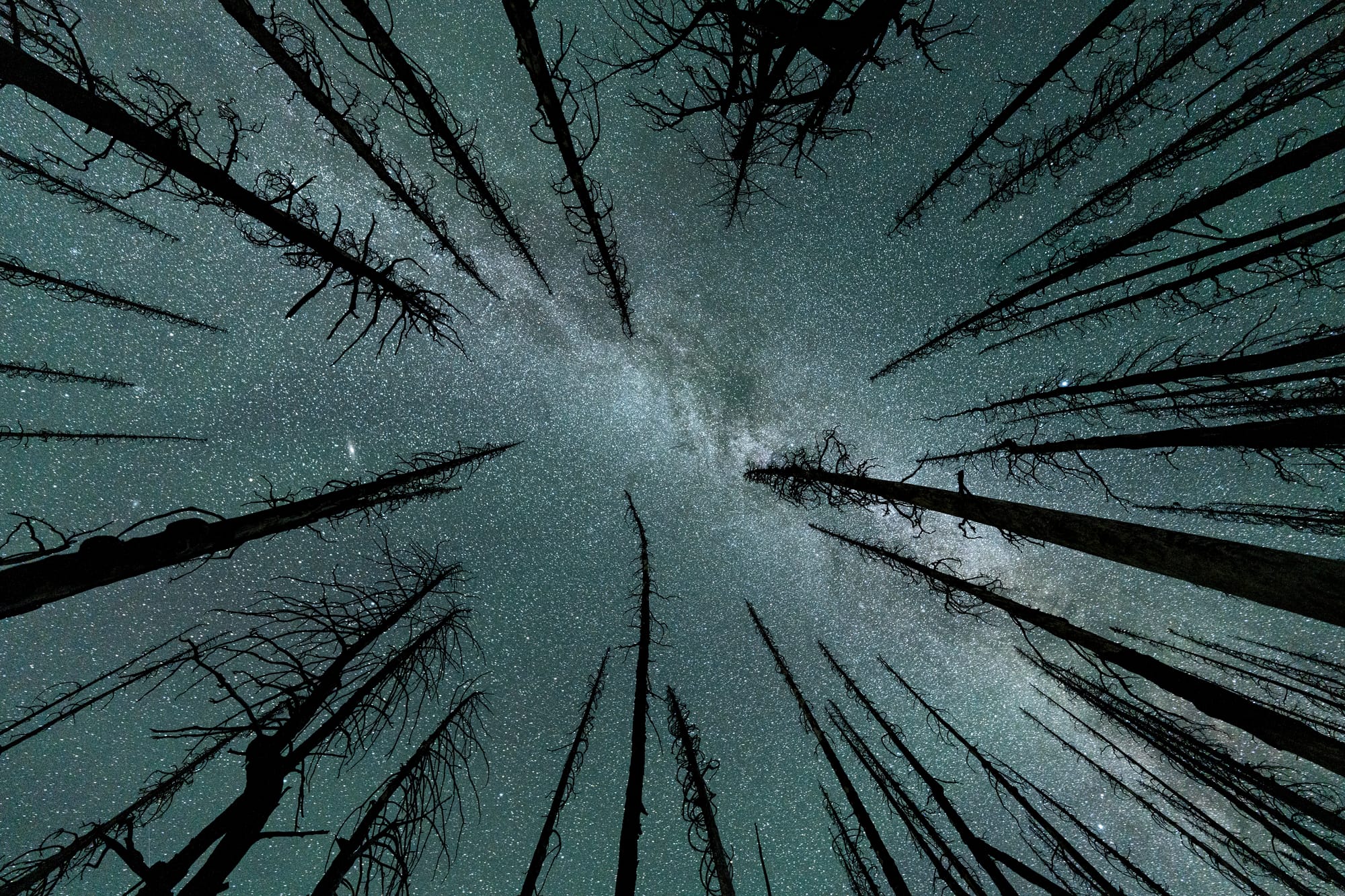
This has been a crazy week, with everything from bright sunny days and temperatures reaching 100 degrees, to wild cloud formations, thunderstorms, drenching rain, and scary wildfires.
Week in Review
The arrival of thunderstorms and drenching rain this week were a mixed bag.
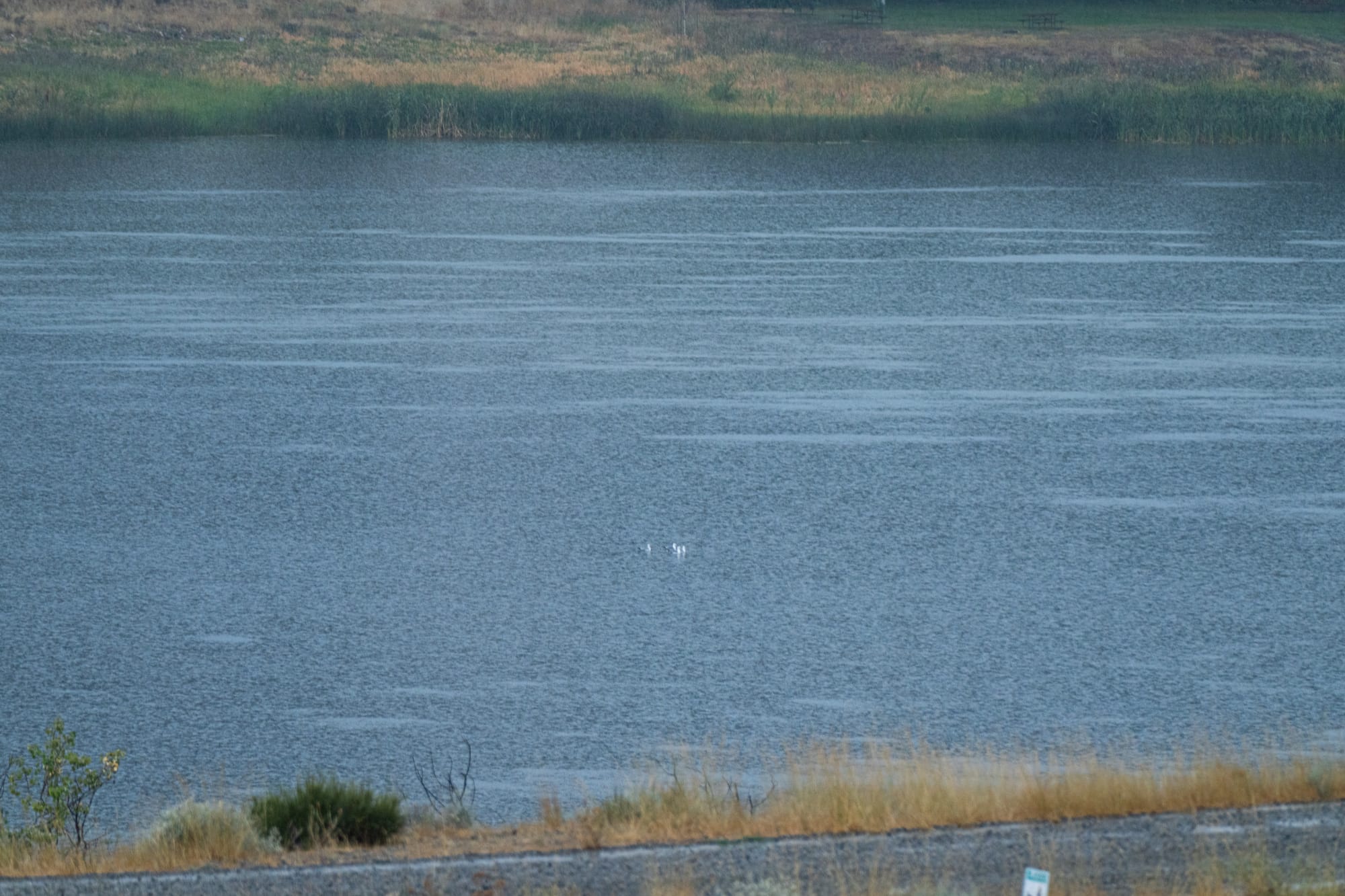
The rain was astounding and much needed, but lightning and fires were also a sobering reminder of how dry the landscape is. Lakes and rivers are still low and everyone is holding their breath to see what August has in store for us.
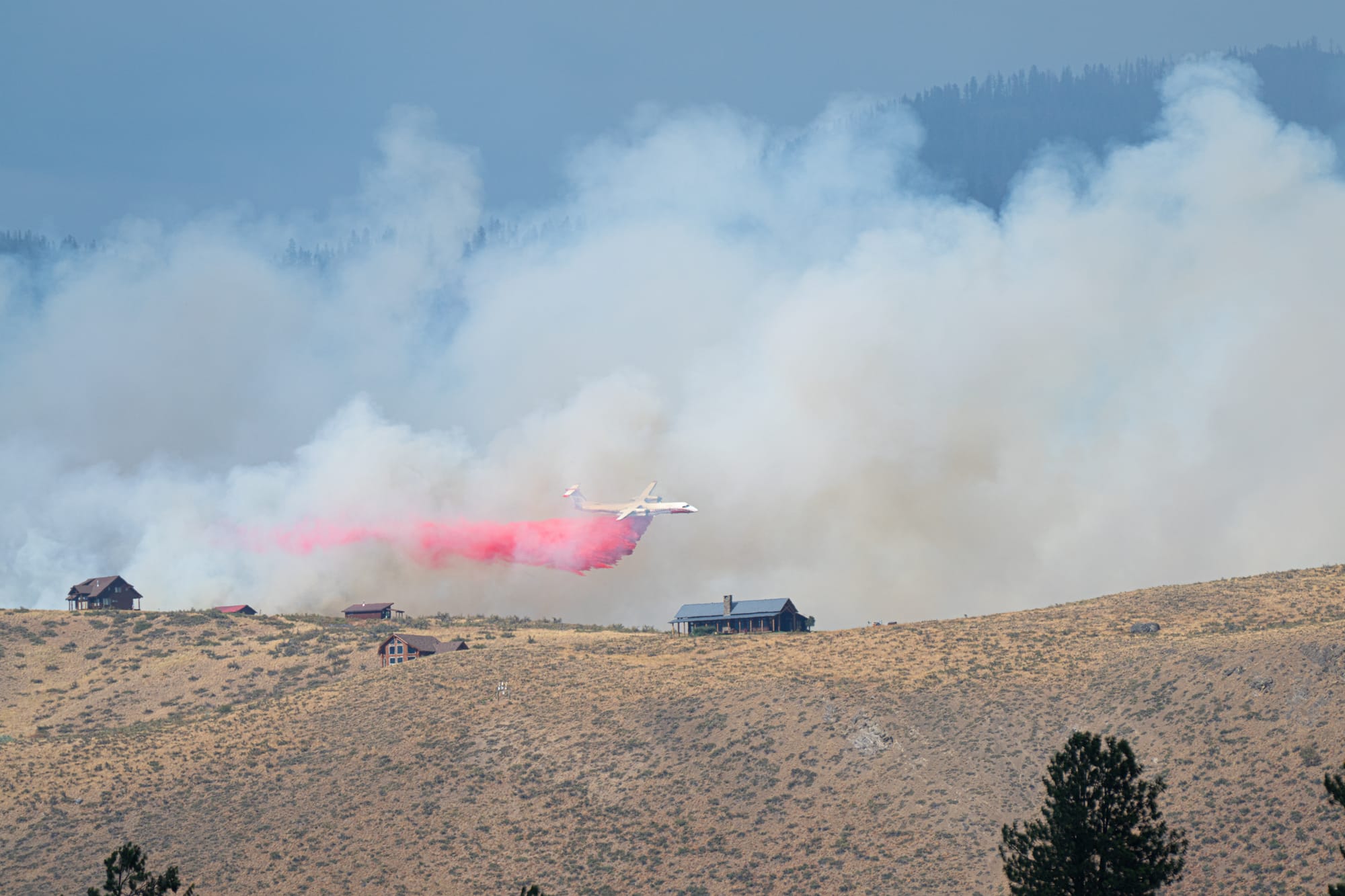
At the same time, the mountains continue to be a glorious haven, and surprisingly it's still possible to find stupendous flower gardens, though everything is definitely drying up.

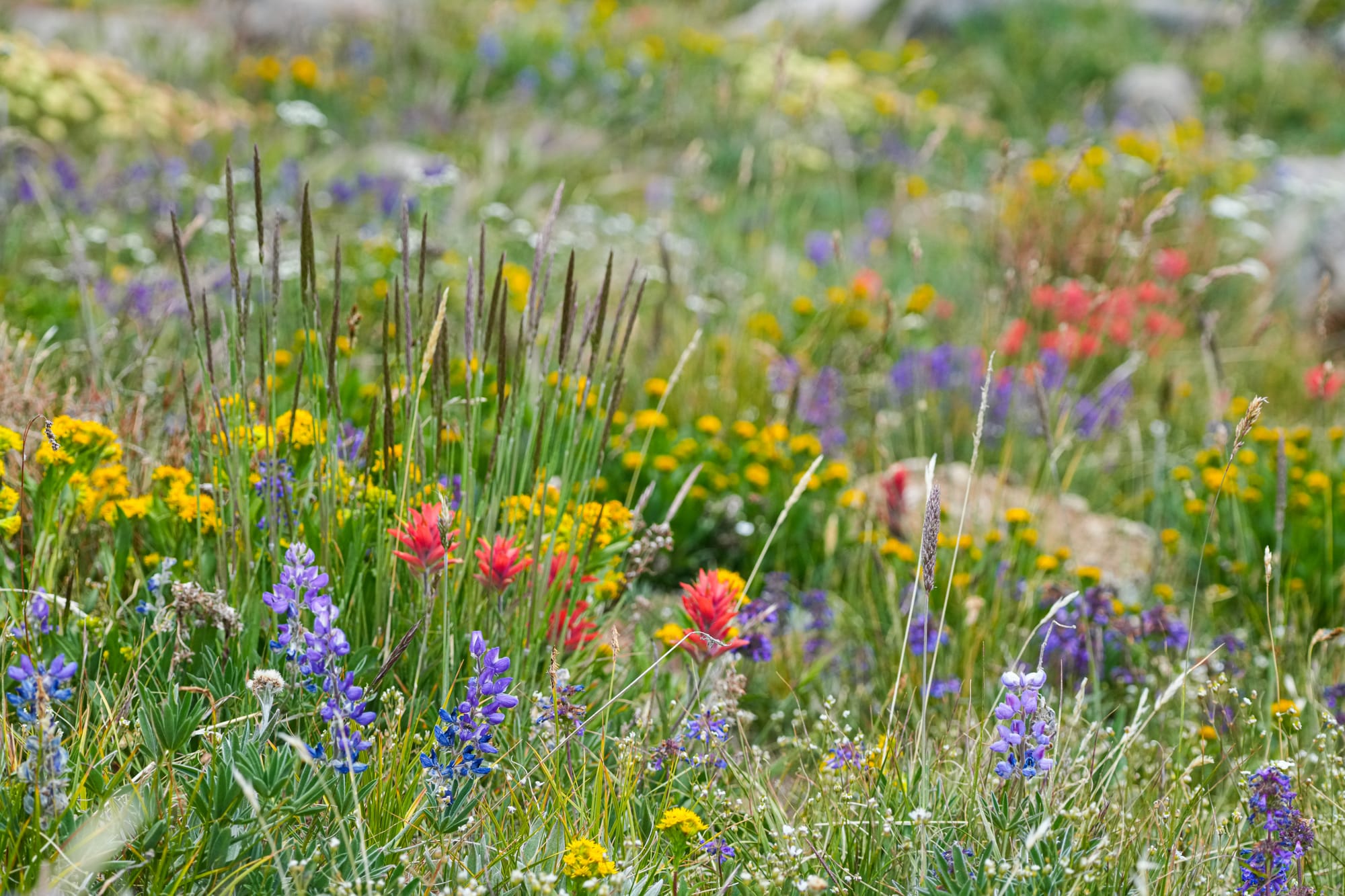
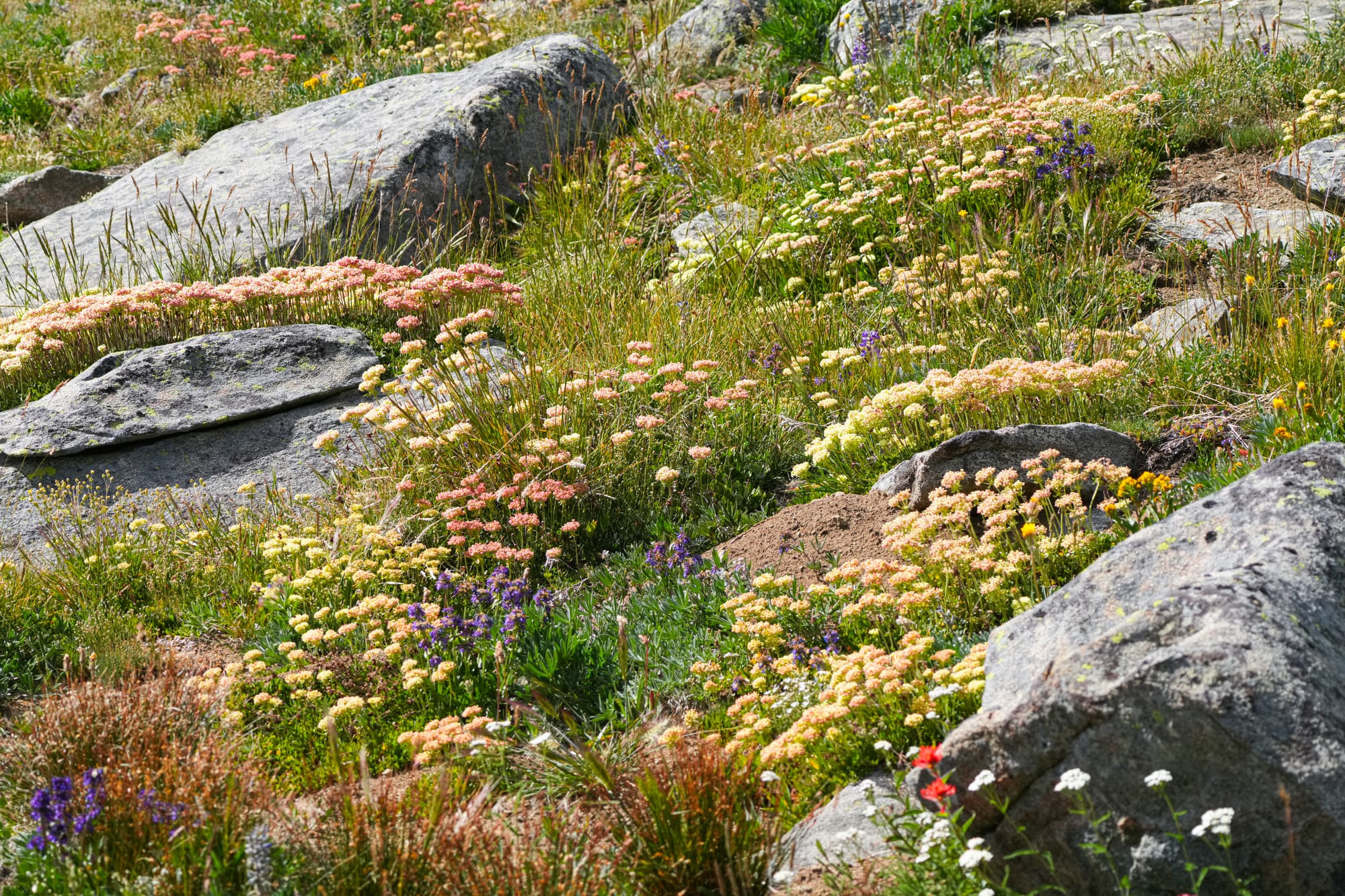
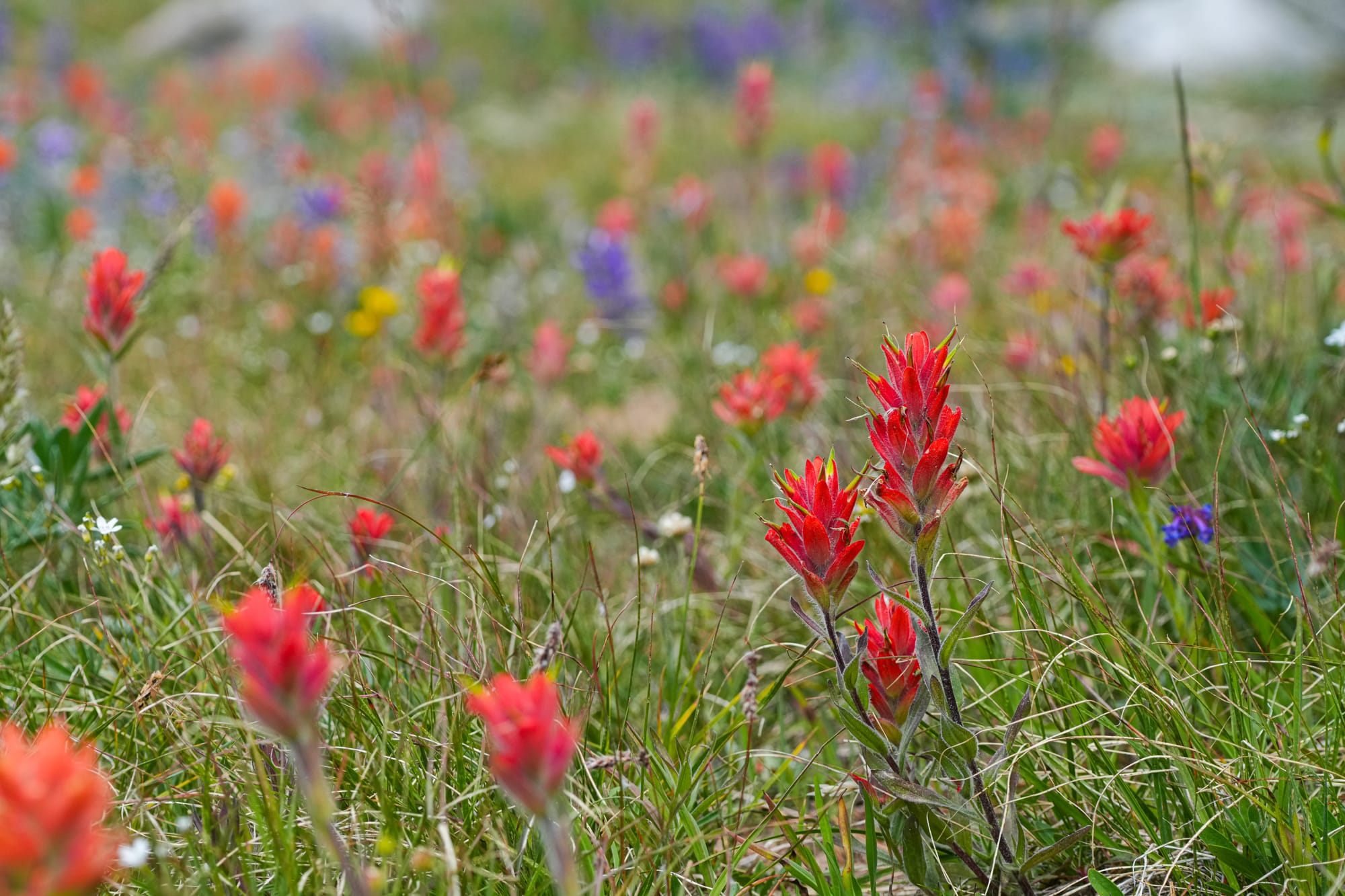
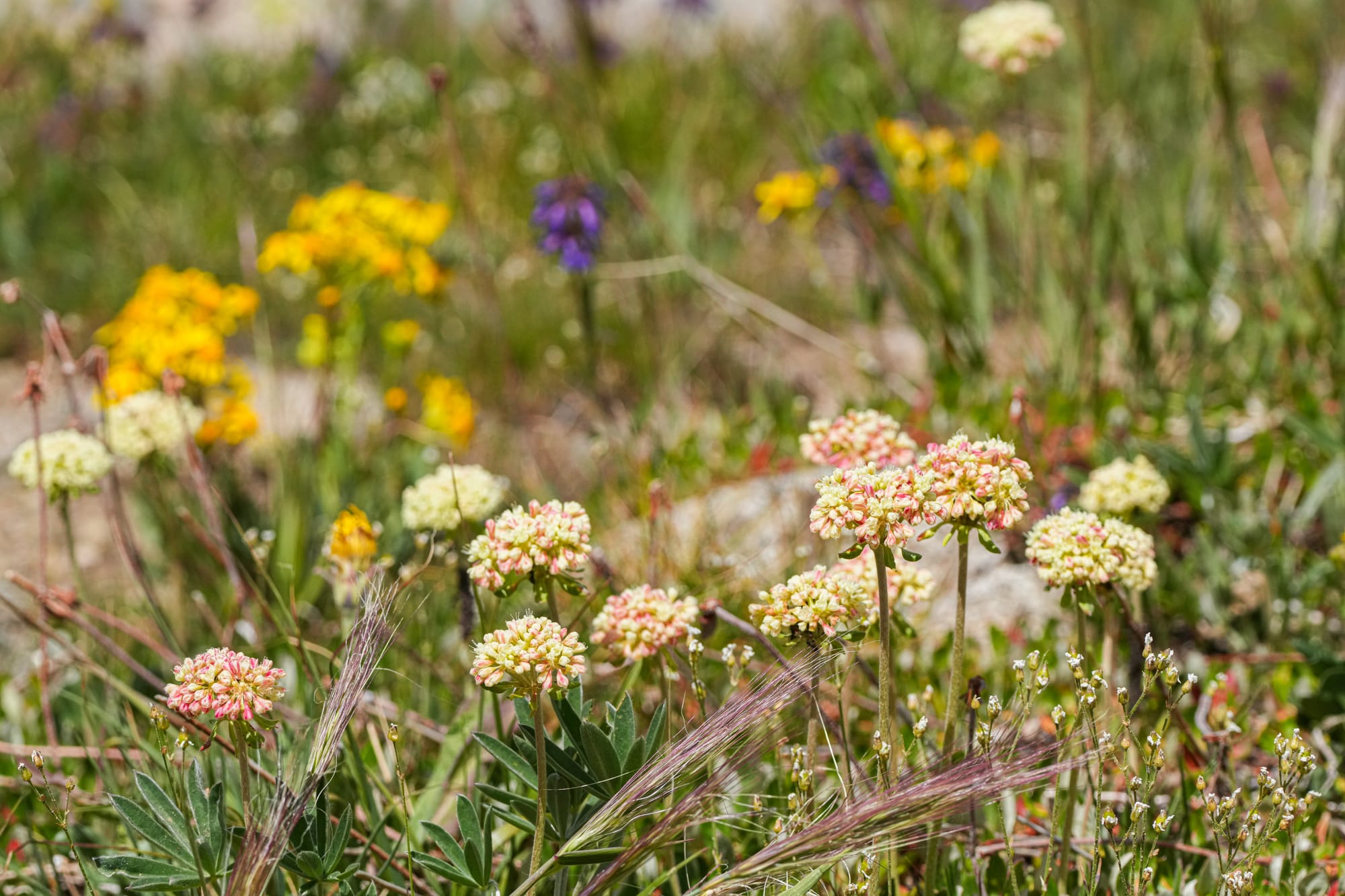
Some examples of flower displays this week. Photos by David Lukas
A handful of birds are also active in the mountains, and none are more noticeable than the Clark's nutcrackers with their flashy colors and bold calls. I think that at this point in the summer nearly every nutcracker is part of a family group focused on taking care of loudly shrieking teenagers. I'm not sure if adults are still feeding youngsters, but judging from the cacophony it sounds like the kids think they'll get fed if they cry loudly enough.
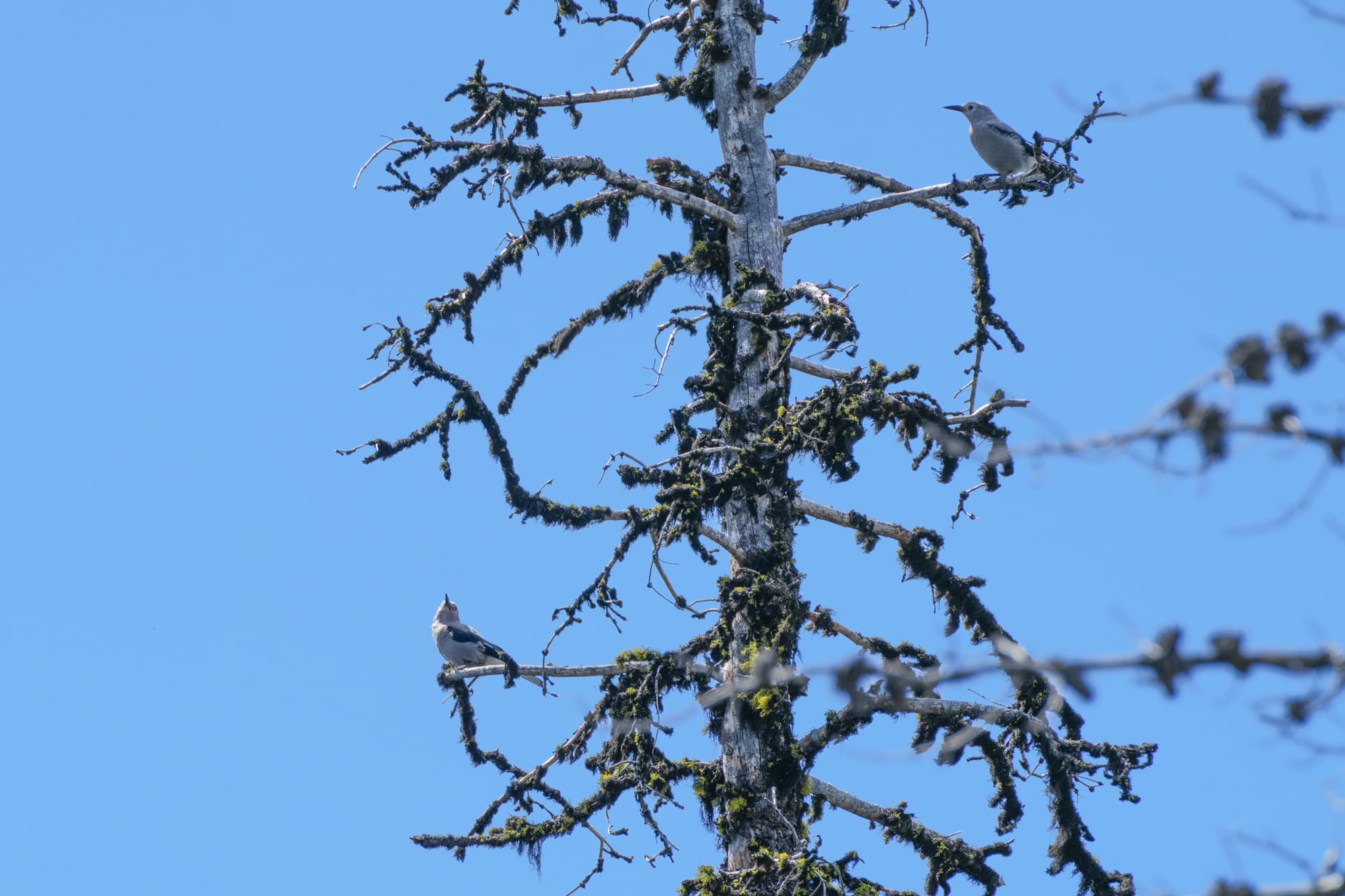
Other youngsters this week have included snowshoe hares. Unlike adult hares, which are rarely seen, I was spotting juvenile hares every couple hundred yards along a forest road one afternoon. It made me wonder if this is a boom year when their numbers dramtically rise?
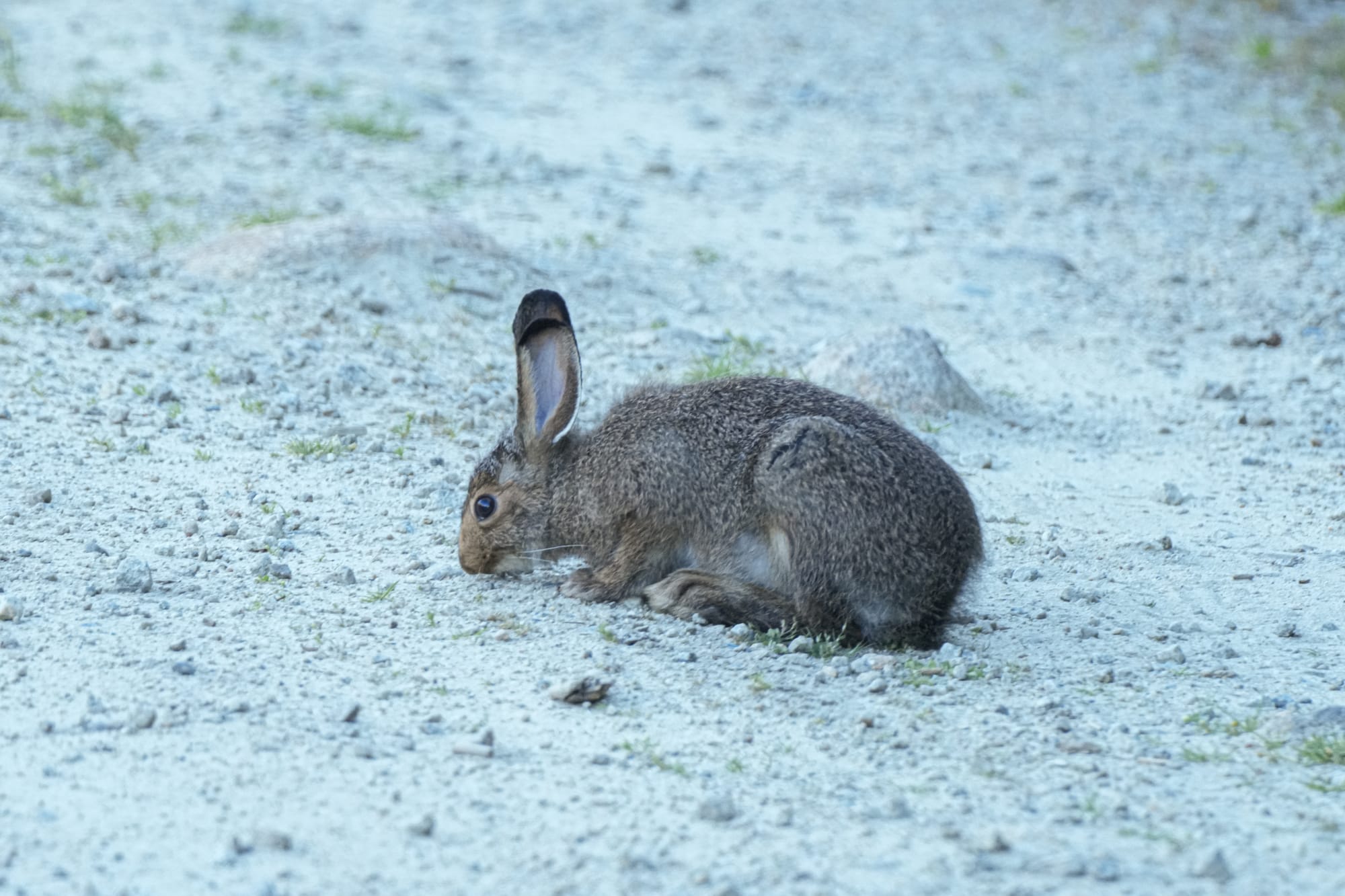
Finding a dried mushroom on a fir branch seven feet off the ground might be another sign of the changing seasons. Large mushrooms don't naturally grow on tree branches but are placed there by red squirrels to dry. Dried mushrooms are then stored to provide much-needed nutrients over the winter, so maybe this means that squirrels have started preparing for the coming winter.
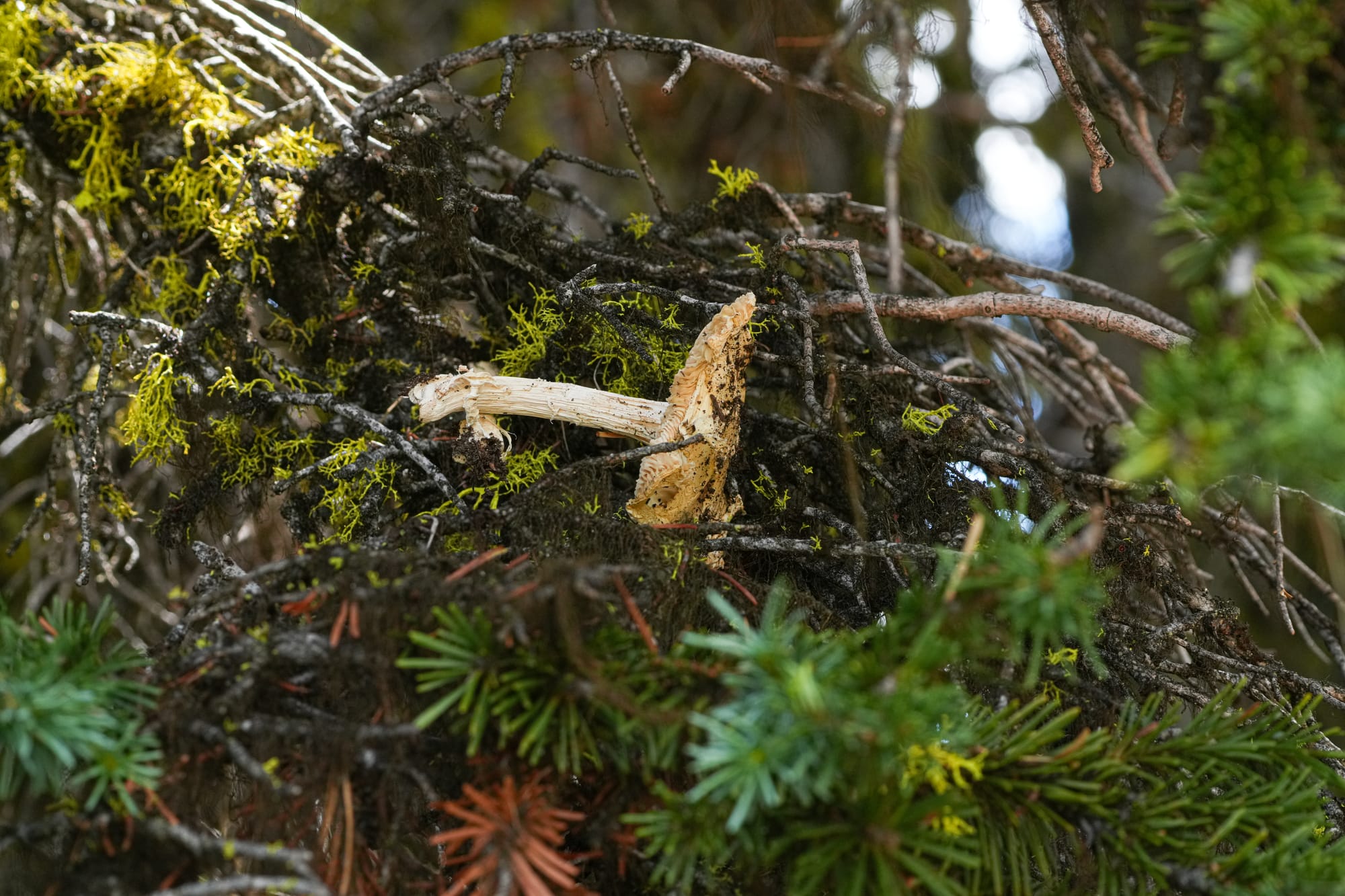
A Celebration: Butterflies of Tiffany Mountain
Tiffany Mountain is a unique location in the Methow Valley and it's remarkable how many butterflies you can find there. On any outing you'll find butterflies everywhere, and I have been on Tiffany when countless butterflies were scattered like fallen confetti on dried grasses and flowers.
Here's a taste of the many butterflies I saw on Tiffany this week.
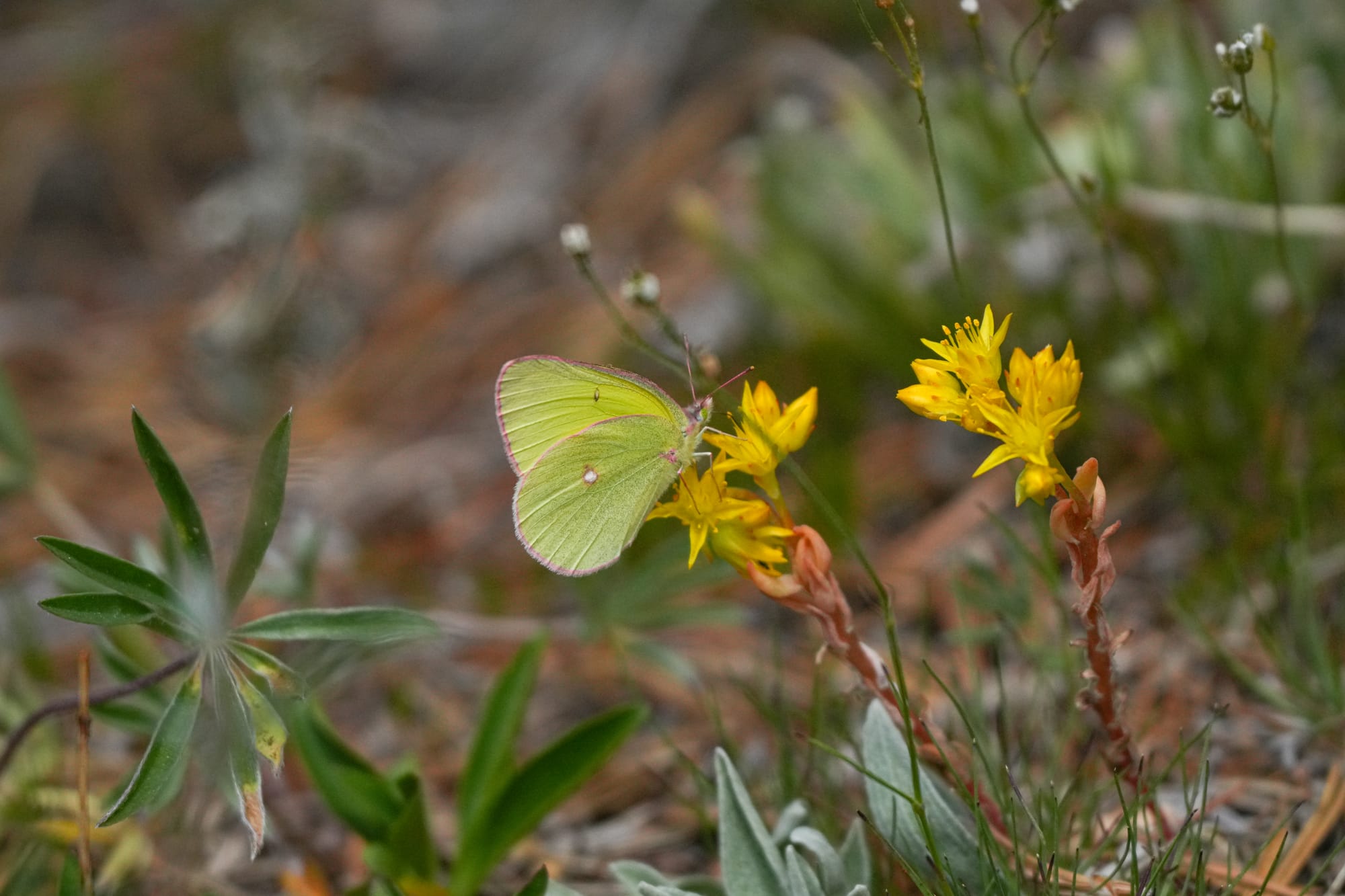
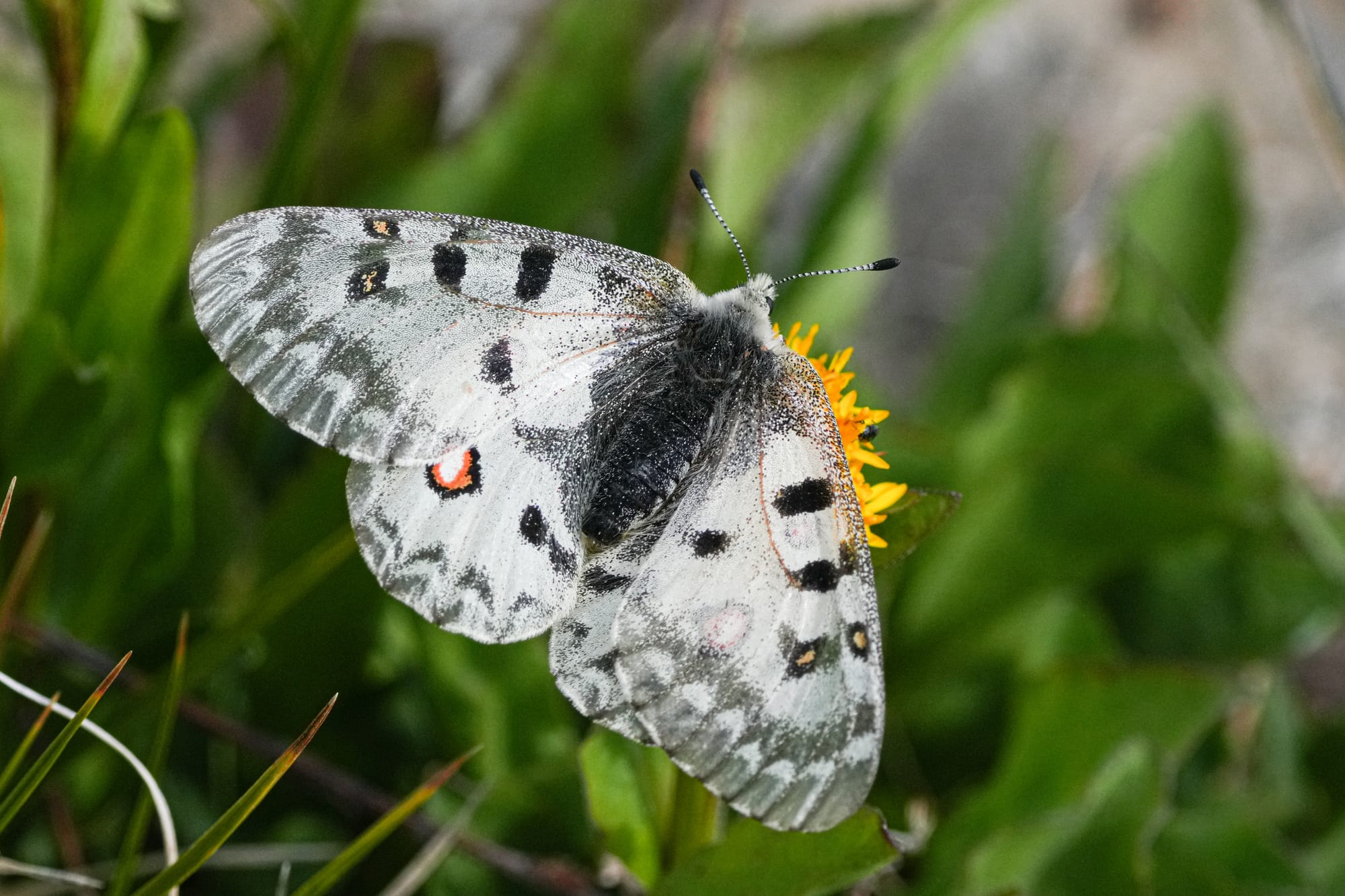
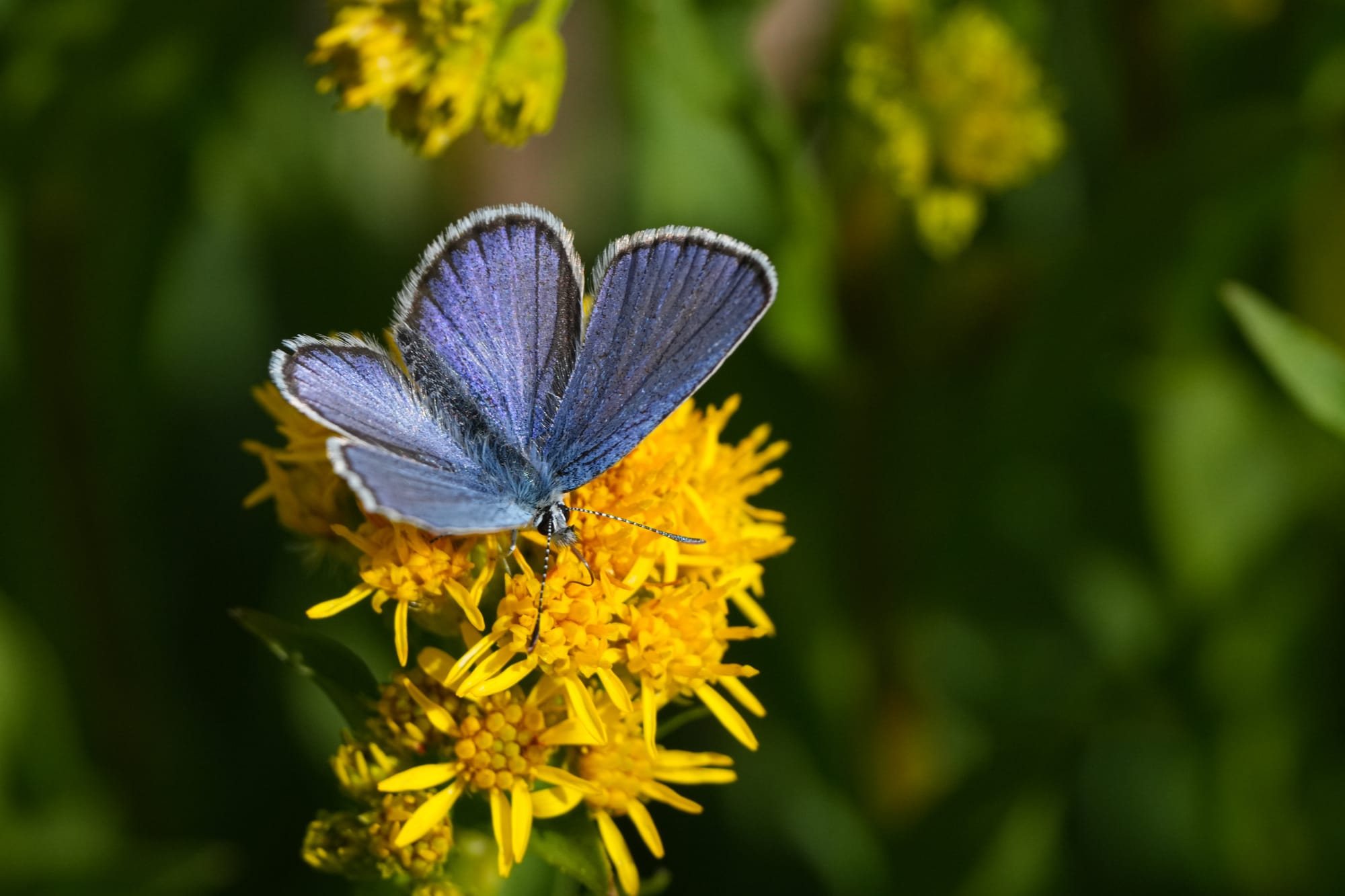
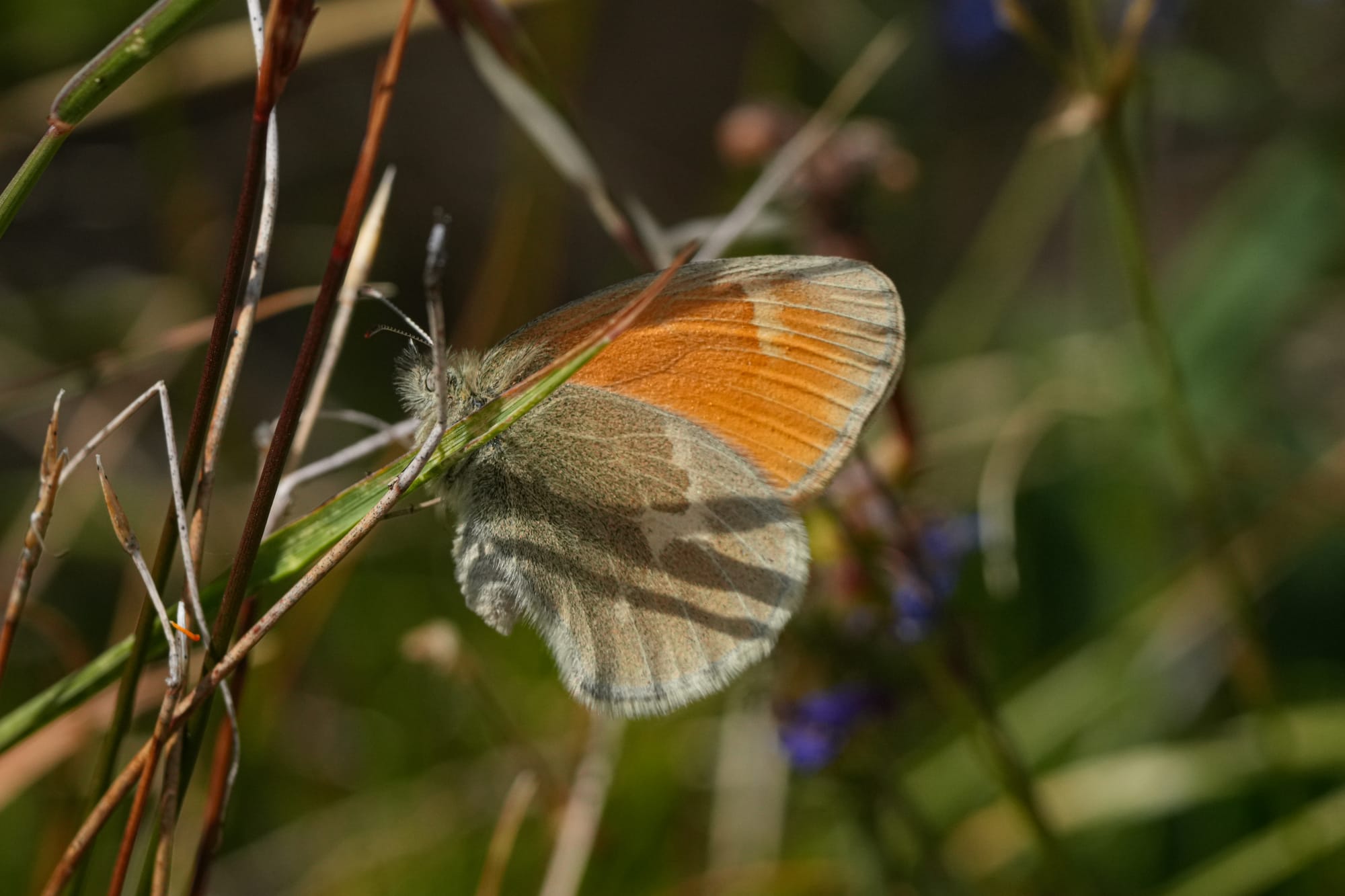
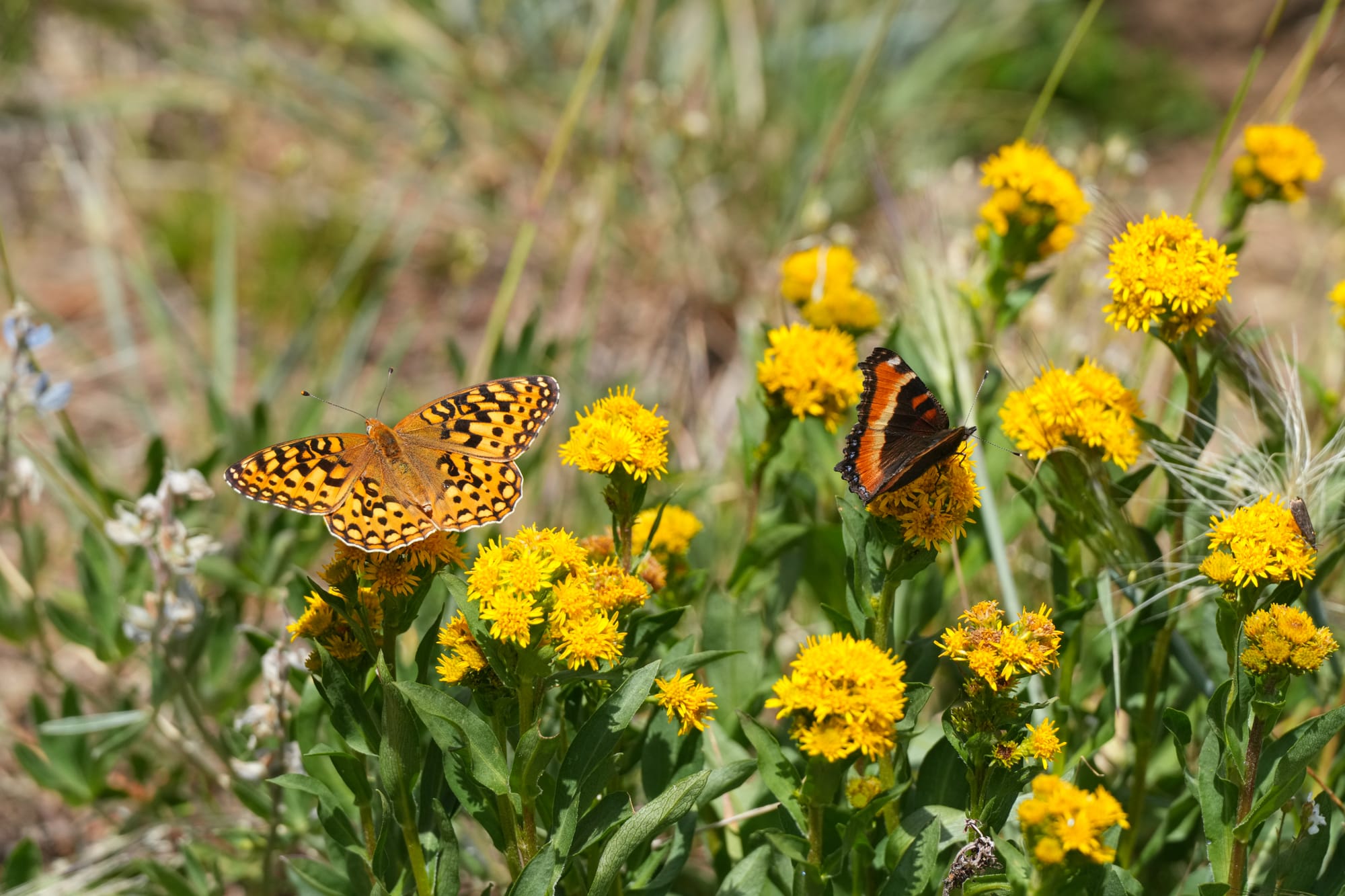
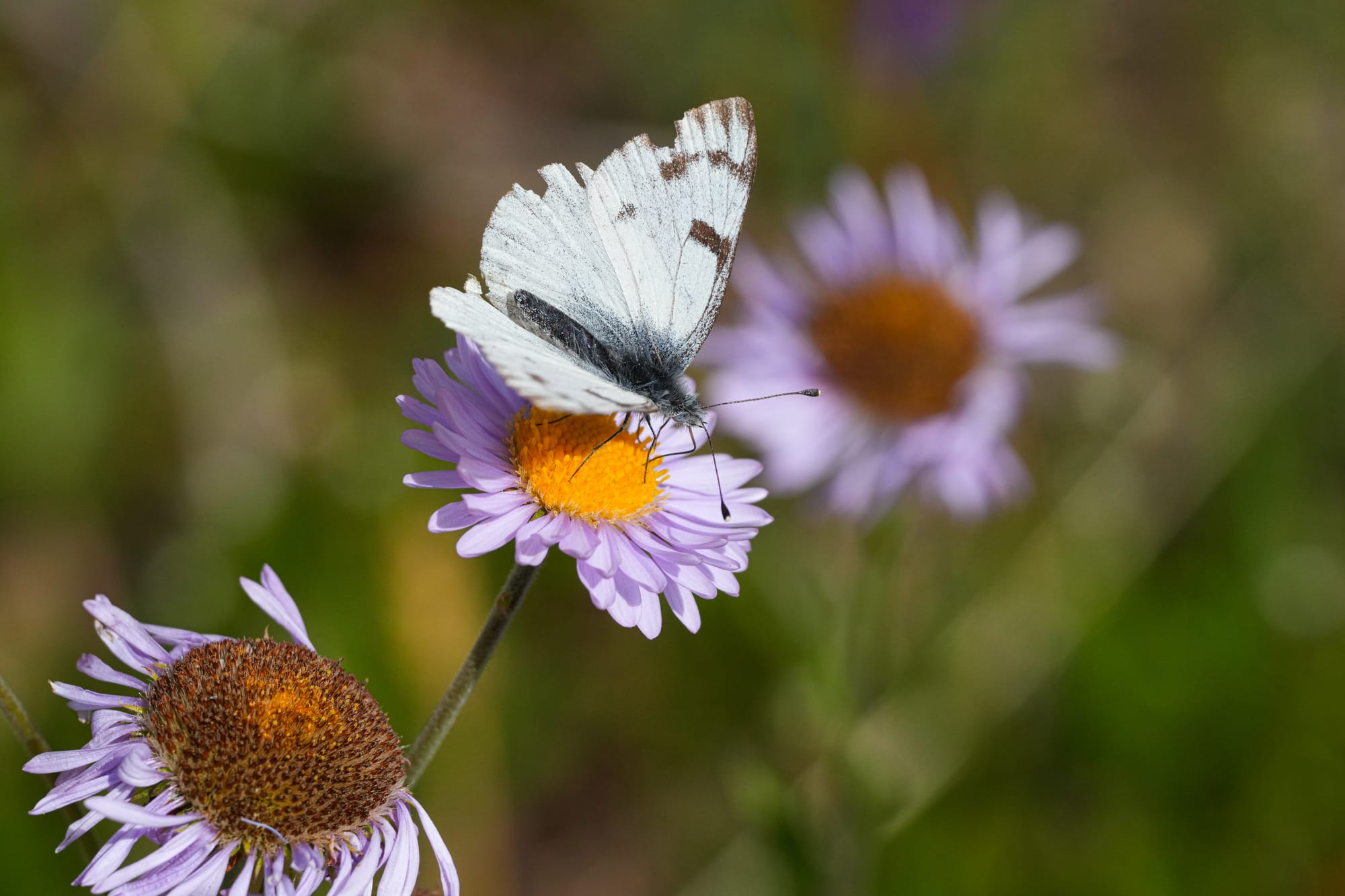
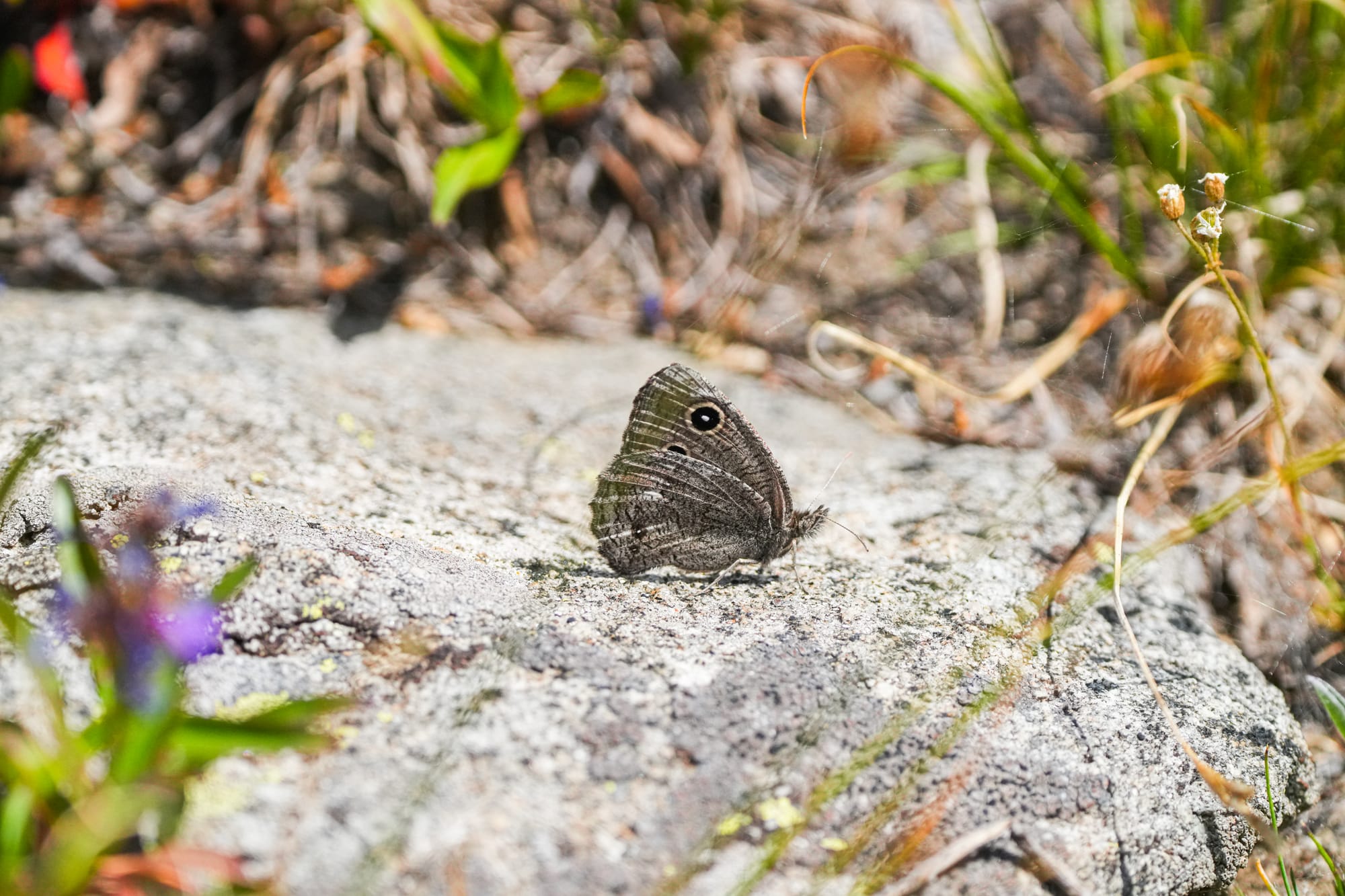
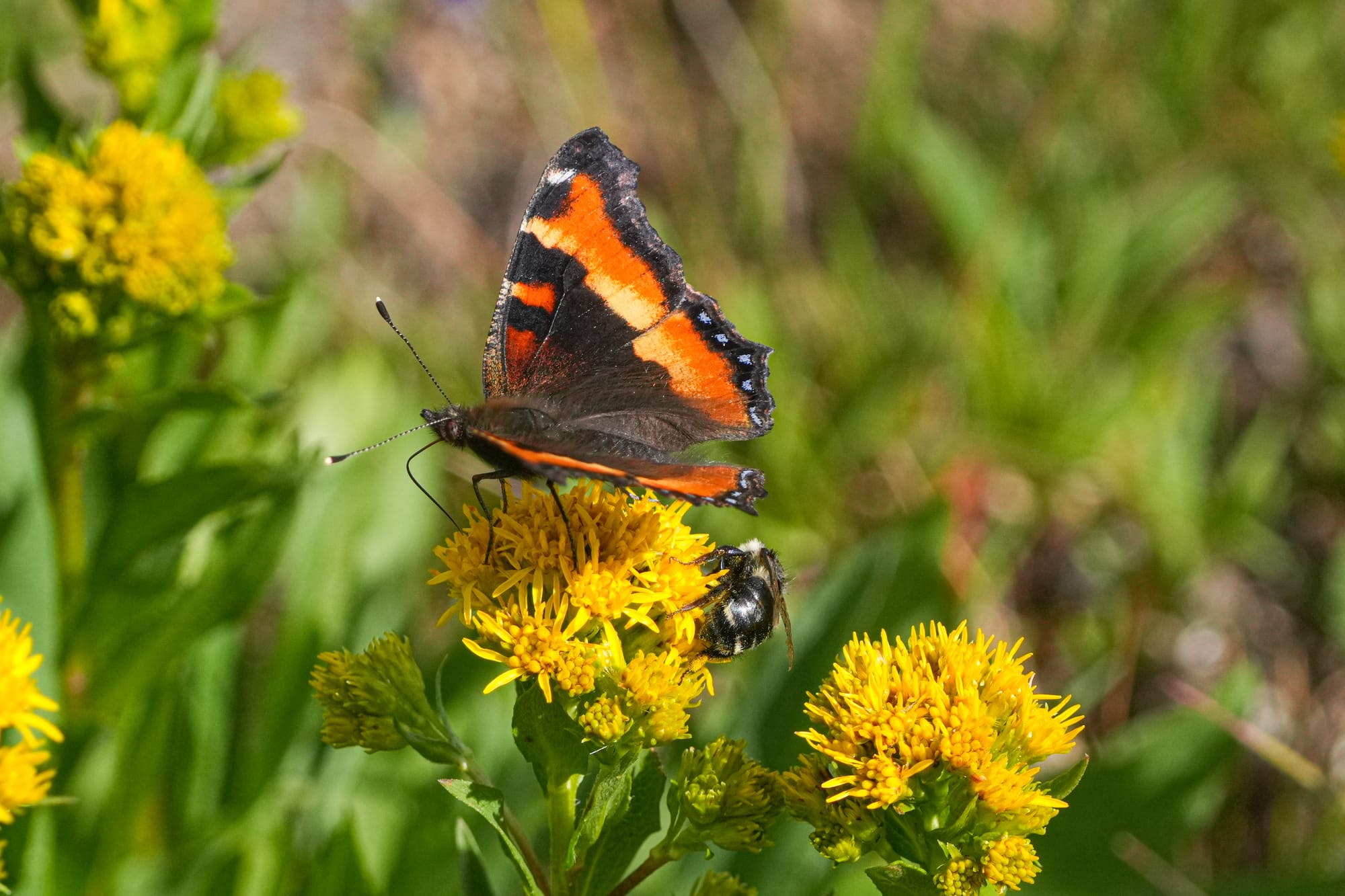
Observation of the Week: Grouse Whortleberry
The grouse whortleberry might be easily overlooked but it's one of the most common subalpine shrubs in the mountains of western North America. In fact, this diminutive plant dominates the shrub layer in much of the Rocky Mountains, Sierra Nevadas, and Cascades even though it rarely grows higher than 10-12 inches.
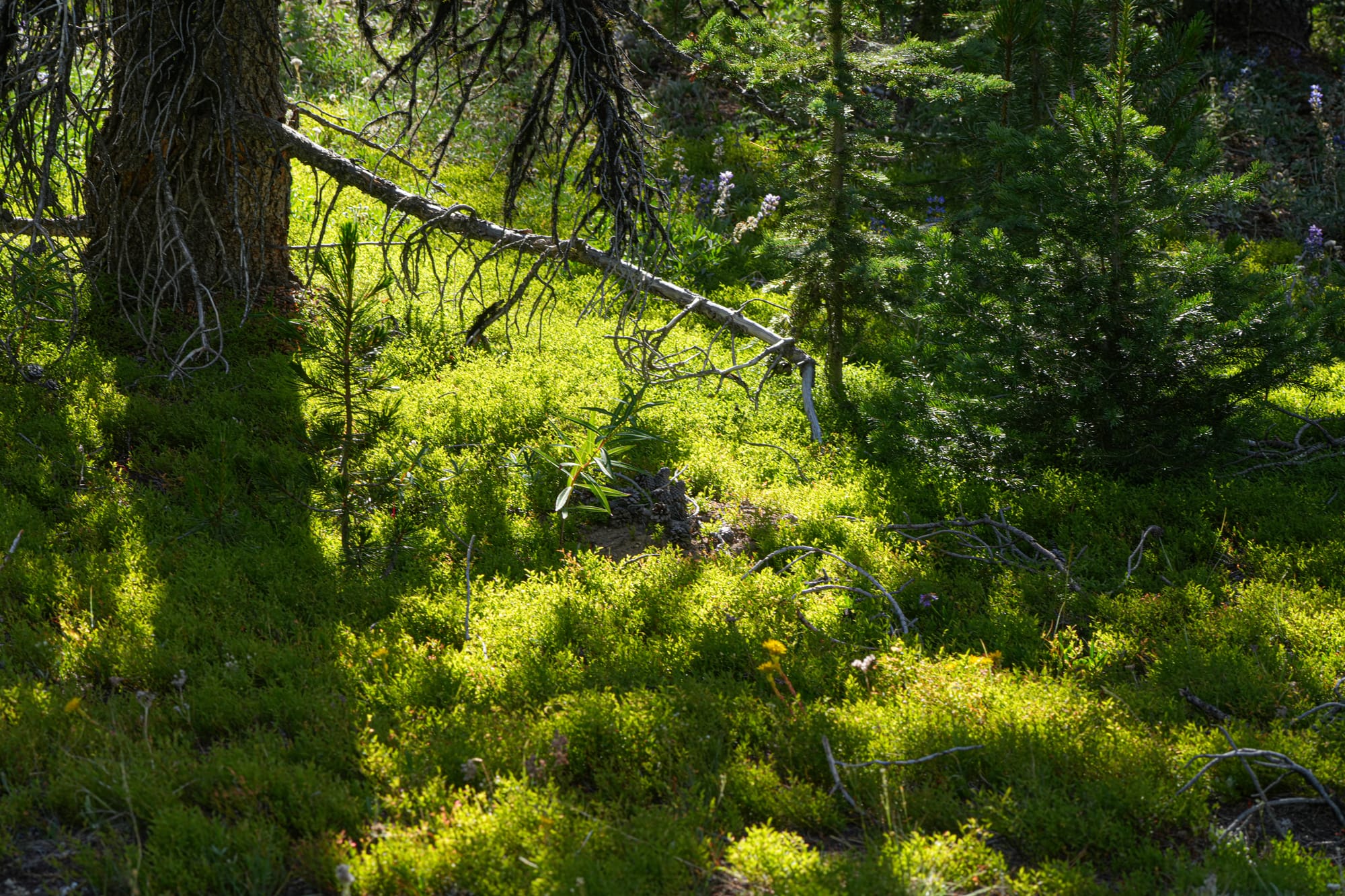
Whortleberries might be tiny huckleberries, but all my years hiking among whortleberries across the American West the thing that's utterly mystified me is the fact that I've never seen a berry on this plant.
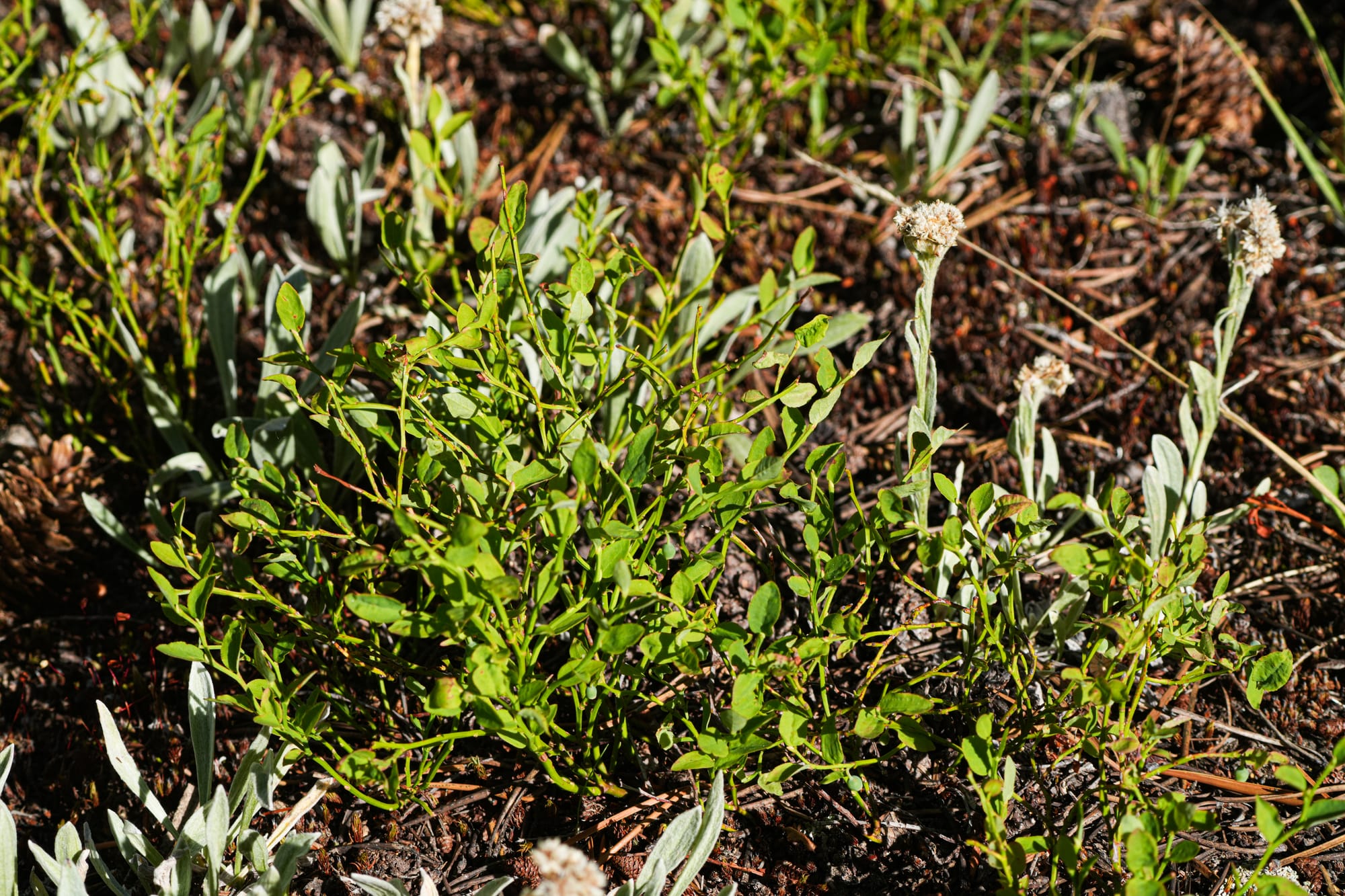
Part of the reason is that the berries are a vital food source for chipmunks, squirrels, mice, foxes, grouse, bluebirds, thrushes, and other small birds that devour these "low-hanging fruit" as quickly as they appear.
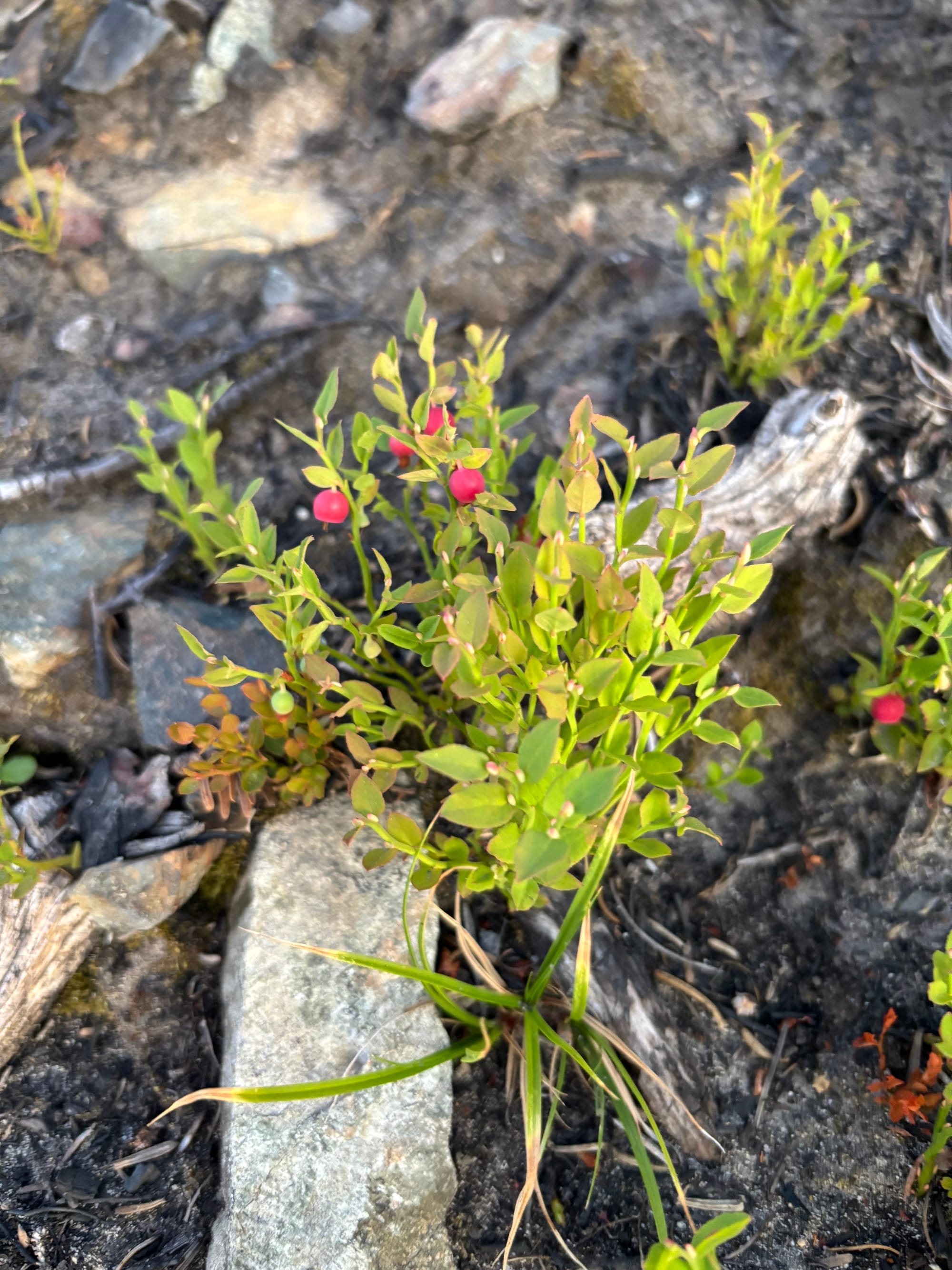
My luck finally changed this week when I discovered plants loaded with berries on a high, jagged ridge that chipmunks and grouse weren't using (or were using so rarely that I got to the berries before they did).
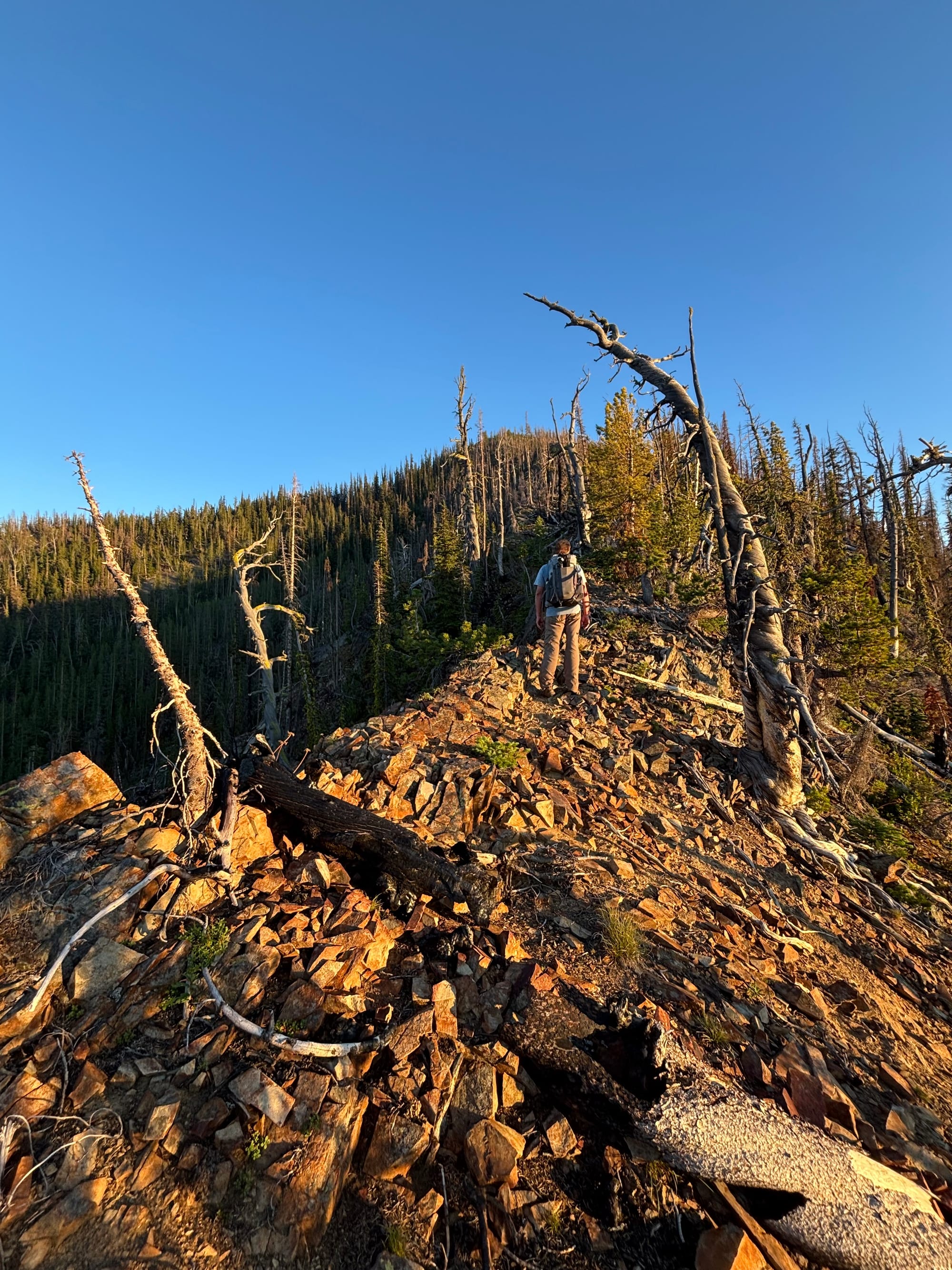
To my amazement, the berries might have been tiny but they were remarkably tasty and sweet.
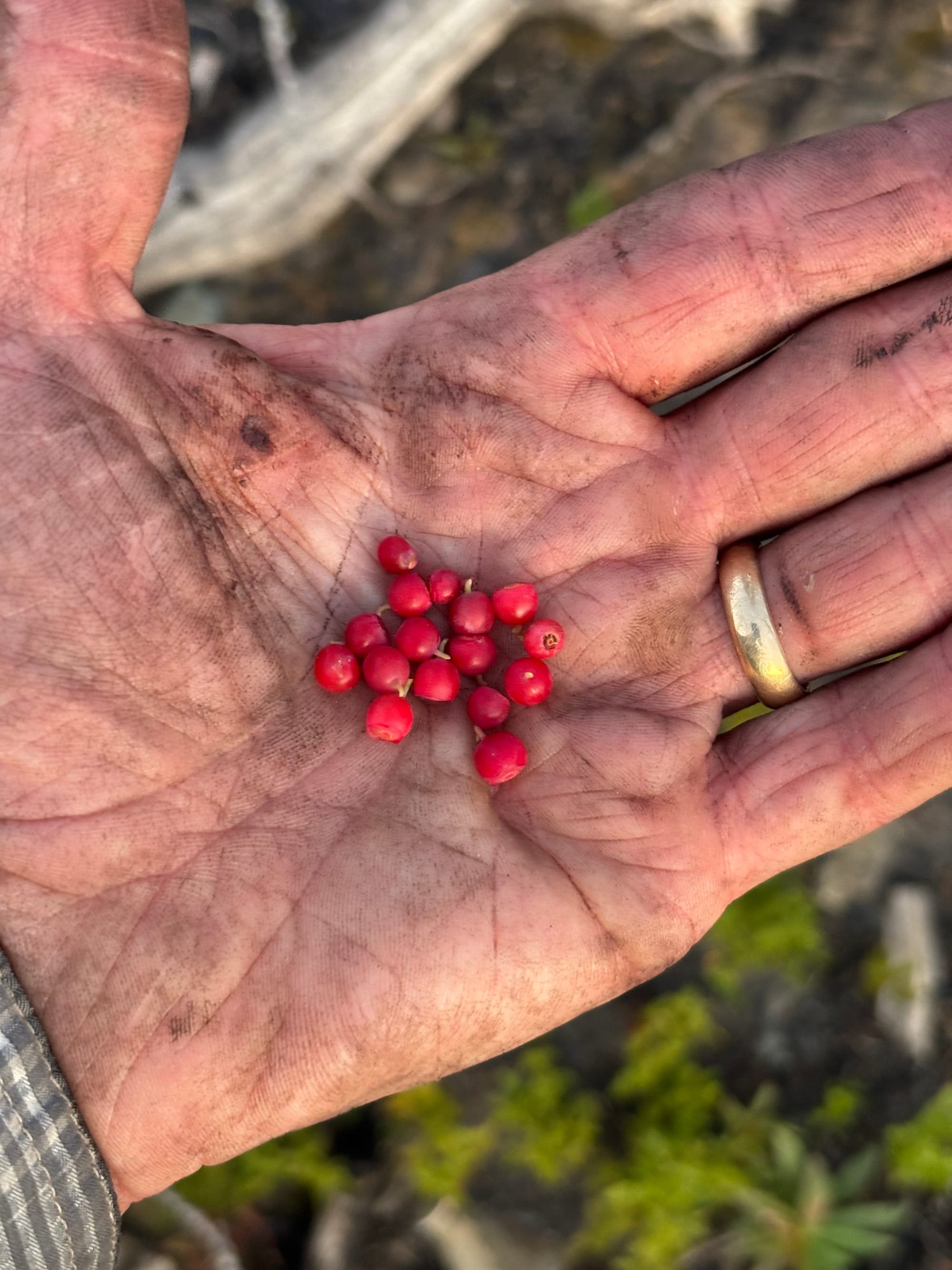
One important part of grouse whortleberry biology is that they spread through a network of rhizomes, and in one study, researchers couldn't find a single seedling that had grown from seeds. Furthermore, whortleberries grow prolifically in older, undisturbed forests, but their shallow rhizomes are significantly impacted by any type of logging activity, so they are an excellent indicator of healthy forests and another reason to pay attention to this overlooked plant.

